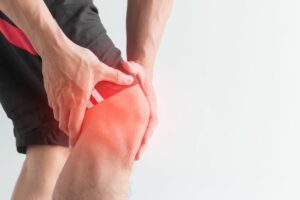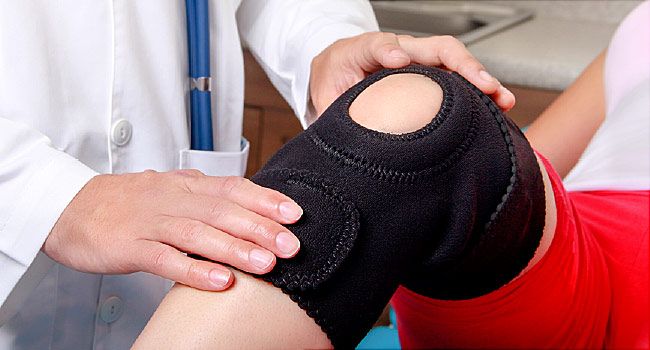Knee pain is a very common ailment that can be caused by numerous things such as an injury, overuse, or arthritis. If you are experiencing knee pain, it is important to seek treatment to restore function and reduce inflammation. Physical therapy is a great treatment option for knee pain. In this blog post, we will discuss the benefits of physical therapy for knee pain and how it can help you get back to your regular activities.
Contents
What Is Knee Pain?

Knee pain is a common complaint that can affect people of all ages. The knee is a complex joint that is made up of bone, cartilage, ligaments, and tendons. Any of these structures can be injured or diseased, resulting in knee pain.
Knee pain can range from mild to severe. It may be intermittent or constant. Knee pain can also be accompanied by swelling, bruising, redness, or warmth.
There are many causes of knee pain. The most common include:
- Arthritis
- Bursitis
- Tendonitis
- Injury
- Osteoarthritis
- Rheumatoid arthritis
- Gout
Treatment for knee pain depends on the underlying cause. Some common treatments include rest, ice, heat, exercises, and over-the-counter (OTC) medications. In some cases, physical therapy or surgery may be necessary.
Physical Therapy For Knee Pain

Physical therapy is often recommended as a treatment for knee pain. Also, Physical therapy can help to reduce pain, increase the range of motion, and improve function.
Your physical therapist will design a custom treatment plan based on your specific goals and needs. Treatment may include exercises, stretches, ice, heat, electrical stimulation, and massage.
Physical therapy can help to decrease pain by improving the strength and flexibility of the muscles around the knee. This can help to take pressure off of the knee joint and prevent further injury. People may also benefit from learning how to properly use crutches or canes if they need to avoid putting weight on the knee.
Sometimes, physical therapy is combined with other treatments, such as medication or injections. For example, corticosteroid injections are sometimes used to reduce inflammation in the knee joint.
If you are considering physical therapy for knee pain, be sure to speak with your doctor first. They can refer you to a physical therapist and help you create a treatment plan.
Different Types of Physical Therapy For Knee

Many different types of physical therapy can be used to treat knee pain. The type of physical therapy you receive will depend on the underlying cause of your pain as well as your symptoms.
Common types of physical therapy for knee pain include:
Exercises
Exercises are often used to stretch and strengthen the muscles around the knee joint. This can help to take pressure off of the knee and improve function. Your physical therapist may also teach you specific exercises to improve your range of motion.
Some of the most common exercises used to treat knee pain include leg raises, hamstring curls, and quadriceps sets.
Stretches
Stretching the muscles around the knee can help to improve flexibility and reduce pain. Your physical therapist may teach you specific stretches to perform on your own at home. They may also use manual therapy techniques to stretch your muscles for you.
These stretches also make it easier to perform exercises that will help to strengthen the muscles around your knee.
Ice
Applying ice to the knee can help to reduce pain and inflammation. Ice may be used for acute pain, while heat may be used for chronic pain. Your physical therapist can teach you how to properly apply ice or heat to your knee.
Massage
Massage can help to reduce pain and muscle spasms. It can also improve blood flow and increase the range of motion. Your physical therapist may massage the muscles around your knee joint or use specific massage techniques, such as trigger point release.
Some types of massages are not recommended for people with certain medical conditions, such as blood clots. Be sure to speak with your physical therapist before beginning massage therapy.
Heat
Another type of physical therapy that can be used to treat knee pain is heat therapy. Heat therapy increases blood flow to the area, which can help to reduce pain and inflammation. It can also relax the muscles around the knee joint.
Your physical therapist may use a heating pad, infrared light, or ultrasound to apply heat to your knee.
Electrical Stimulation
Electrical stimulation involves applying a small electrical current to the skin around the knee. This can help to reduce pain by stimulating the nerves and muscles. It can also increase blood flow and reduce inflammation.
Your physical therapist may use a TENS unit, IFC unit, or NMES unit to deliver electrical stimulation.
Straight Leg Raises
An exercise that can help to stretch and strengthen the muscles around the knee is the straight leg raise. This exercise is often performed with a resistance band or ankle weight.
To perform this exercise, start by lying on your back with both legs extended in front of you. Place a resistance band around one ankle and loop the other end around your foot. Keeping your leg straight, slowly lift it off of the ground. Hold this position for a few seconds before lowering your leg back down. Repeat this exercise 10-15 times before switching to the other leg.
If you don’t have a resistance band, you can place an ankle weight around your ankle before performing this exercise.
Quad Sets
Quad sets are a type of physical therapy exercise used to help improve knee function and mobility. The quadriceps (muscles in the front of the thigh) are key in providing stability and support for the knee joint. Quad sets help to strengthen these muscles, which can in turn help to reduce pain and improve knee function.
To perform a quad set:
- Sit in a chair with your knees bent at a 90-degree angle.
- Tighten the muscle in the front of your thigh (the quadriceps), and hold for 5 seconds.
- Repeat 10 times.
How Does Physical Therapy For Knee Work?

The first step is always going to be a consultation with a physical therapist. They will ask you about your symptoms, medical history, and any other relevant information to create a customized treatment plan for you.
Also, the working of physical therapy for the knee can be different from person to person, depending on what the root cause of the pain is. For example, if you’re dealing with arthritis, the focus will be on exercises that help improve the range of motion and strengthen the muscles around the joint.
If you had recent surgery, the therapist will likely start with lower-impact exercises and then progress to more intense ones as your strength and mobility improves. The main goal is always going to be getting you back to your previous level of function.
What Are The Benefits Of Physical Therapy For Knee?
Many benefits come with physical therapy for knee pain. One of the most obvious ones is that it can help lessen your pain and make your daily life more manageable.
It can also improve your mobility and flexibility as well as increase the strength of your leg muscles. This can help prevent further injuries from occurring.
Physical therapy can also help you avoid having to take medication or have surgery. It is a natural, drug-free way to treat your pain.
If you are suffering from knee pain, physical therapy may be a good option for you. It offers many benefits and can help improve the quality of your life. make sure to consult with a physical therapist to create a personalized treatment plan for you.
What Can Patients Expect From Physical Therapy For Knee?

The first step your physical therapist will take is to perform a thorough evaluation to develop a personalized treatment plan. This will usually involve assessing your range of motion, muscle strength, and flexibility as well as testing your joint stability. In some cases, your therapist may also order X-rays or other imaging tests to get a better look at the structures inside your knee joint.
Once your evaluation is complete, your physical therapist will work with you to develop a treatment plan that is tailored to your specific needs. This plan may include exercises to improve range of motion and flexibility, strengthen the muscles around the knee joint, and improve stability. Your therapist may also use modalities such as heat or cold therapy, electrical stimulation, or massage to help reduce pain and inflammation.
Most patients will need to perform their exercises daily to see results. However, as your symptoms start to improve, you will likely be able to reduce the frequency of your visits to the physical therapy clinic. In some cases, patients may only need to come in for one or two sessions per week to maintain their progress.
Conclusion
Physical therapy can be an extremely effective treatment for chronic knee pain. If you are suffering from knee pain, be sure to talk to your doctor about whether physical therapy may be right for you. Many insurance plans cover physical therapy, so it may be more affordable than you think.
While physical therapy won’t cure your knee pain, it can help you manage it and improve your quality of life. Physical therapists can help you find ways to reduce your pain, increase your range of motion, and improve your overall knee function. If you are ready to get back to living your life without knee pain, contact a physical therapist today.
Physical Therapy help patients recover from pain. If you’re experiencing Back pain, Shoulder pain, Knee pain, Neck pain, Elbow pain, Hip pain, or Arthritis pain, a physical therapist at MantraCare can help: Book a physiotherapy session.


